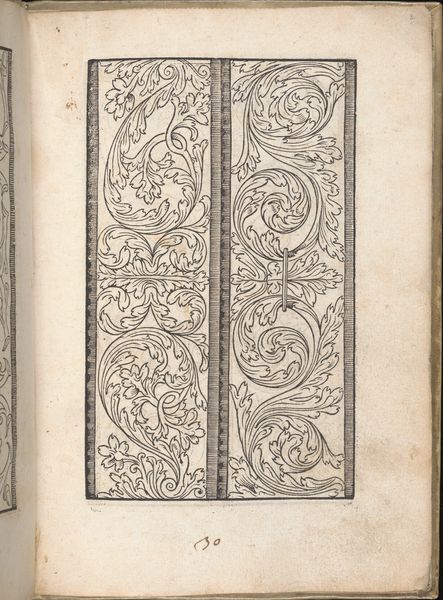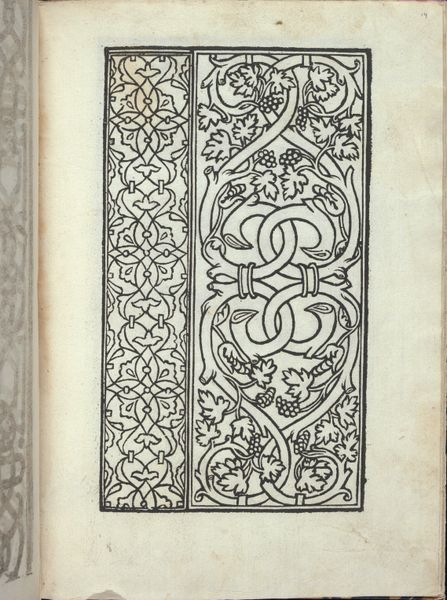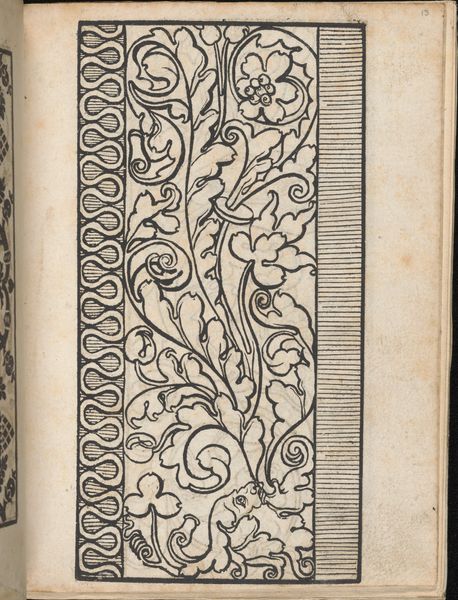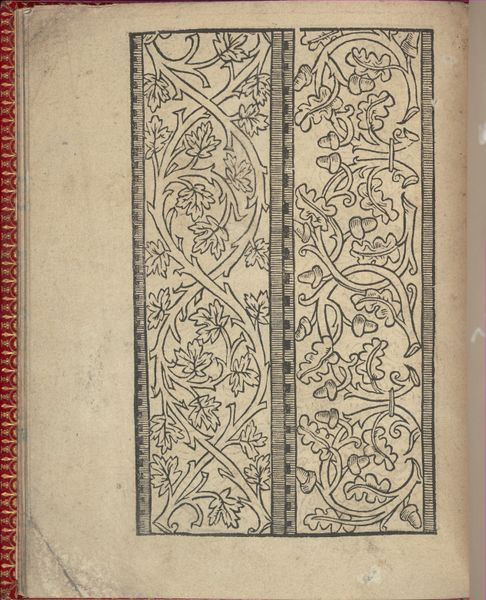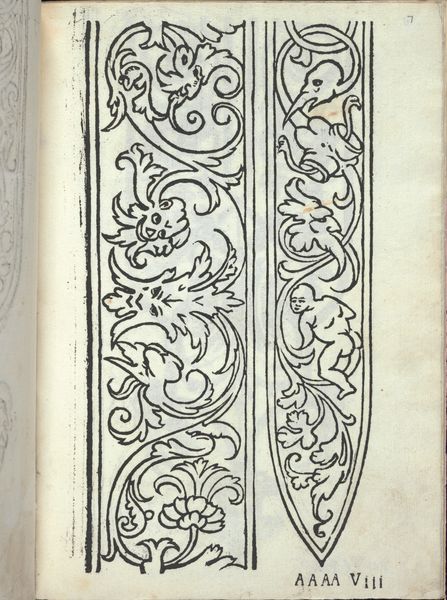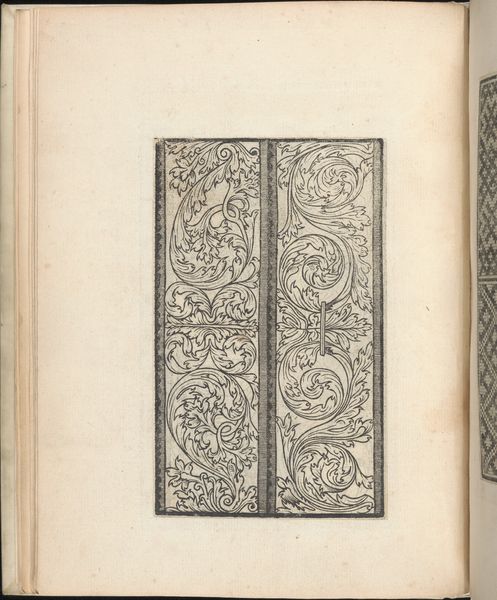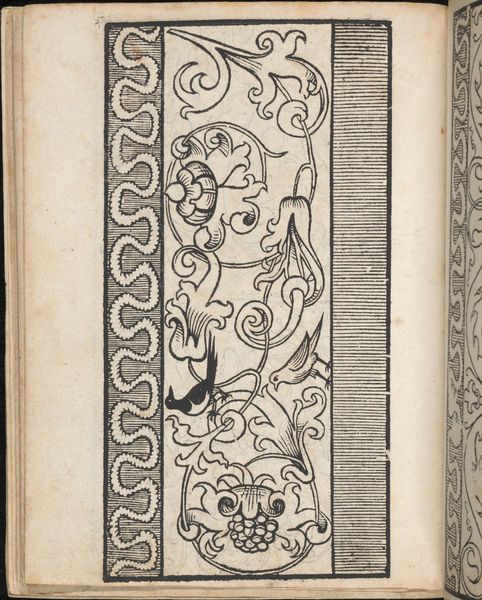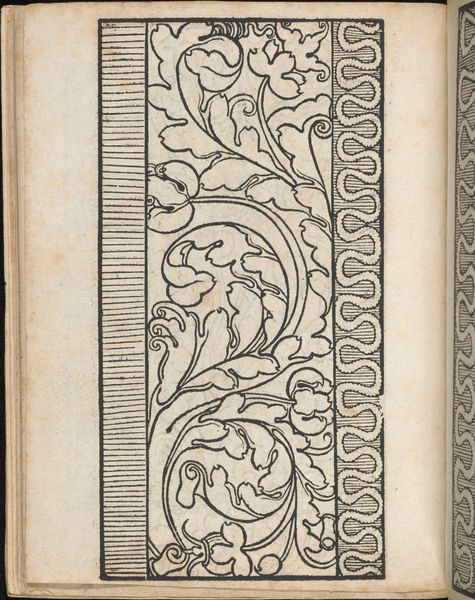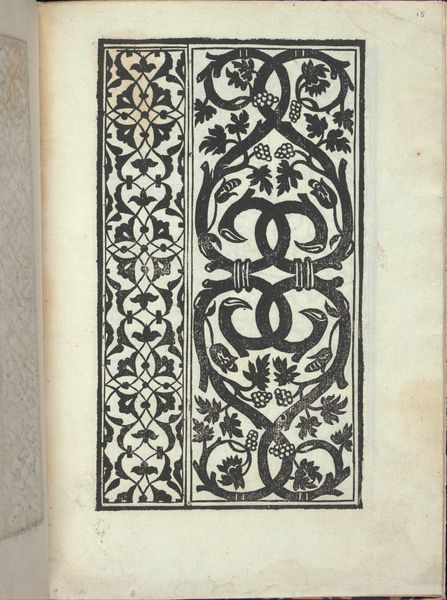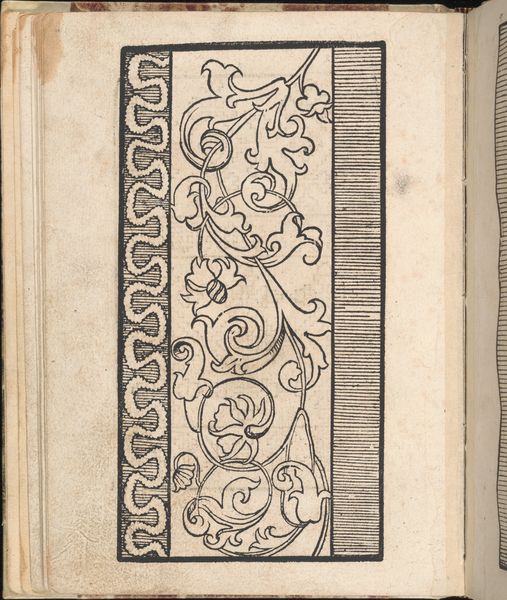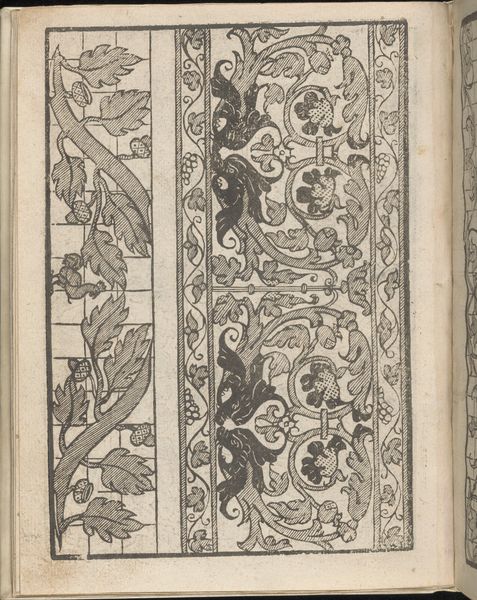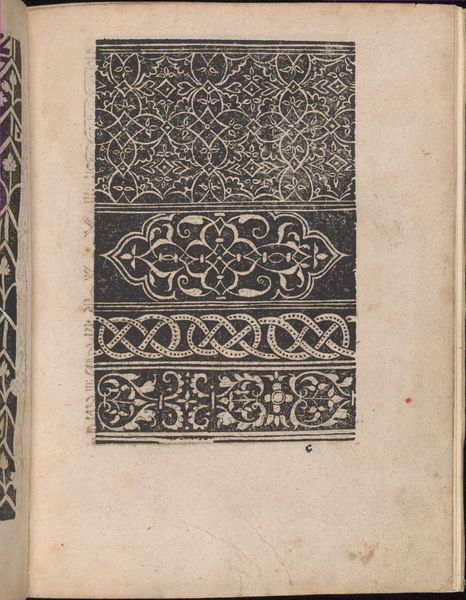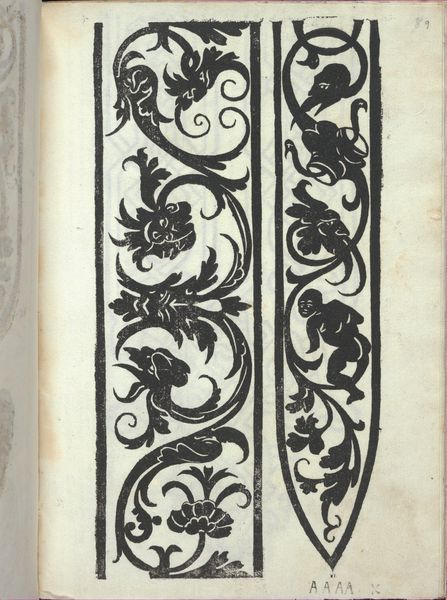
Libro quarto. De rechami per elquale se impara in diuersi modi lordine e il modo de recamare...Opera noua, page 16 (recto) 1532
0:00
0:00
drawing, print, engraving
#
drawing
#
medieval
#
pen drawing
# print
#
book
#
engraving
Dimensions: Overall: 8 3/8 x 5 7/8 x 3/16 in. (21.2 x 14.9 x 0.5 cm)
Copyright: Public Domain
Curator: This is an engraving from Alessandro Paganino’s *Libro quarto. De rechami per elquale se impara in diuersi modi lordine e il modo de recamare…Opera noua*, specifically page 16. It dates back to 1532. Editor: Immediately, it evokes this very specific kind of medieval grandeur, or the idea of it anyway. Look at the sheer density of pattern, yet also a rigorous simplicity because it's monochrome and seems to embrace variations of floral patterning in two registers of composition. Curator: The patterns were meant as guides for embroidery, so practically the design itself becomes part of the symbolic system – a coded language teaching someone how to physically create. Think about the time, skill, and cultural value attached to these textiles. It represents wealth and domestic virtue simultaneously. Editor: And the swirling forms feel inherently celebratory! The patterns echo one another and establish an implicit symmetry that invites you to find relationships that, even though prescribed, appear very dreamlike and fluid at once. Did people adapt these patterns much, do you think? Curator: We know these designs were disseminated widely. Considering how long pattern books remained in use – sometimes generations! – that does suggest interpretations must have multiplied, accumulating nuances over time. Vines have signified abundance and interconnectedness throughout countless cultures and across millennia, their very structures suggesting nature's spiraling dynamism. I love that tension between prescribed design and evocative motif. Editor: It makes me wonder how many individual hands translated this particular design onto cloth over the years, each one bringing just a touch of themselves into it. Now that, is a kind of magic worth savoring. Curator: It definitely deepens one's appreciation of the object. A relatively simple pattern book holds a surprisingly rich visual history, reminding us of artistry both complex and often unseen. Editor: So next time you admire some old embroidery, think of this, think of this particular page setting that whole act of creation into motion. It's like uncovering another dimension!
Comments
No comments
Be the first to comment and join the conversation on the ultimate creative platform.
